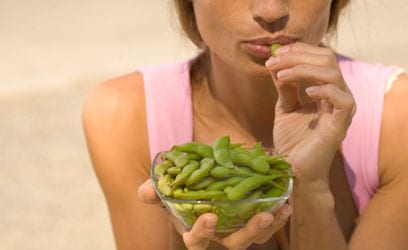The raw food diet has quickly moved from the fringe to a major trend. It only make sense that a large portion of the uncooked fruits, vegetables, nuts, seeds and grains in a raw diet would also be organic, because raw foodists are concerned with how the body absorbs nutrients without taking in toxins, preservatives and chemicals. Before embarking on a raw organic diet, consider some of these tips to make the experience more beneficial and raise your chances of successfully sticking with this major lifestyle change.
Transition
Going raw in one fell swoop can certainly be done, but you have a greater chance of success if you transition slowly to a raw organic diet. Try going raw at breakfast with an organic strawberry banana smoothie, or try some melon and a handful of nuts. Some people aim for 50 percent raw food in the first couple weeks, gradually working up to 100 percent raw.
Diversify
Fruit salad for breakfast and vegetable salad for lunch is convenient, easy and offered at most restaurants, but it can become dull if you do not mix it up with some different dishes. You need not spend hours over the dehydrating machine to keep things interesting. Try a basic gazpacho or a guacamole dip with organic carrots. Consult the Living and Raw Foods website (see Resources) to check out the hundreds of combinations and possibilities available to you.
Fight cravings
A raw organic diet can cause some discomfort for the first couple weeks, ranging from headaches to nausea. Even after these initial weeks, you may experience cravings for sugar, salt or cooked food. One way to handle these cravings is to integrate superfoods into your raw organic diet. Superfoods such as raw cacao, maca, goji berries, spirulina, garlic, ginger, chlorella, ginseng and bee pollen contain high concentrations of nutrients.





